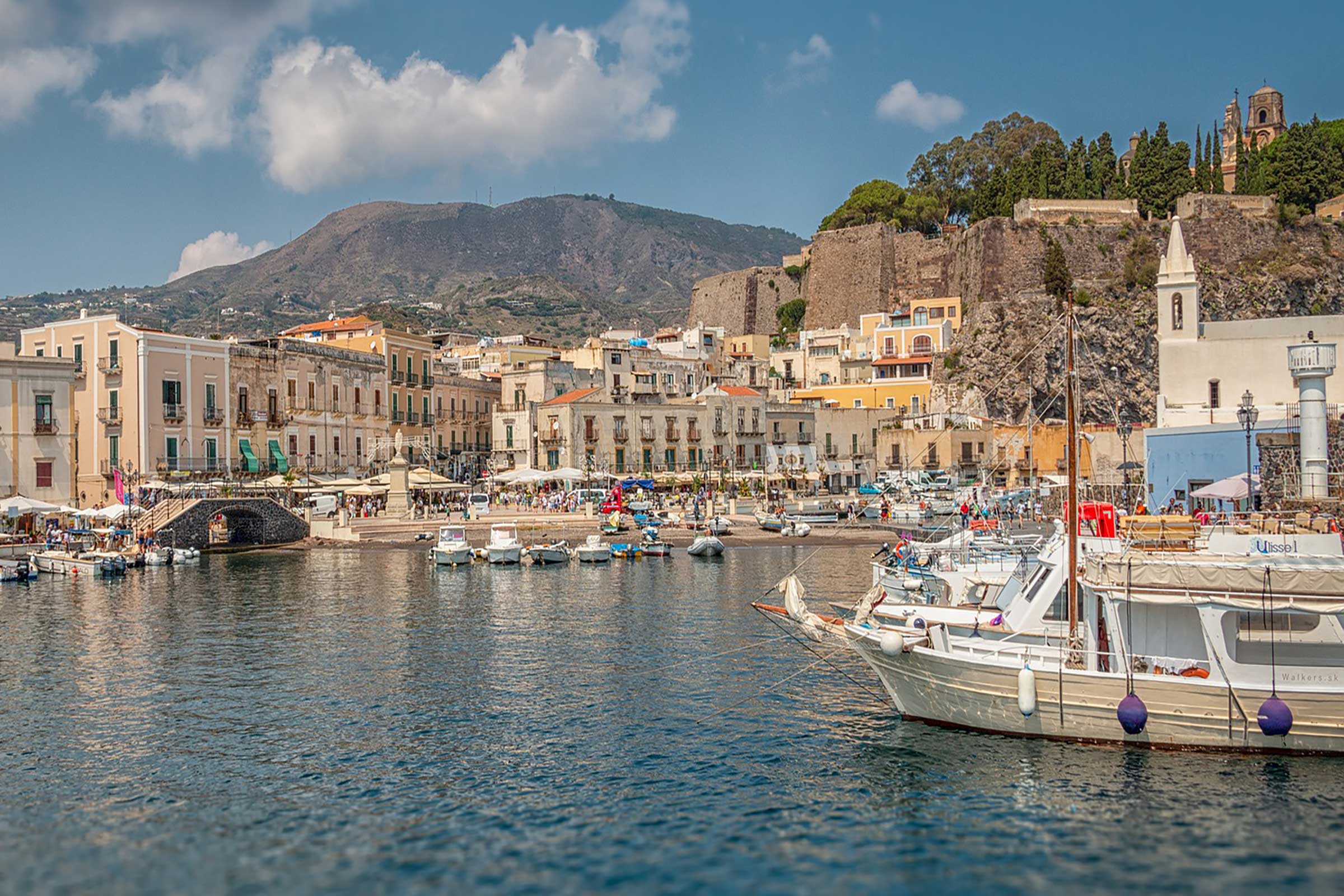Lipari Island
Lipari, the "capital" of the Aeolian Islands, is the most populous and the most popular island of the archipelago, especially because it is located in the center. With a large number of hotels and restaurants, it is the best equipped starting point for visiting the other islands .
The island of Lipari can be reached by sea with hydrofoils, from the ports of Naples, Messina , Milazzo, Palermo and Reggio Calabria, while with ships from the ports of Naples and Milazzo .
Tourists disembark in one of the two ports of Lipari city: Marina Lunga and Marina Corta . The ports are located on either side of the small town on the promontory. Here you can visit the cathedral and the archaeological museum. The city center extends between the two ports, in the main road, Via Vittorio Emanuele, you can use the services of banks, offices and restaurants.
Lipari city has a fantastic play of pastel colors immortalized on the walls of its houses, even if the continuous and consistent influx of tourists has led to the opening of shops selling beach items and surfboards along the main street. The town shows all its authentic charm in the back streets and in the area around the cathedral.
North of Lipari, between the popular pebble beaches of Canneto and Porticello , stands the industrial settlement for the extraction and processing of pumice .
What to see in Lipari
Lipari Castle
After the devastation by Ariadeno Barbarossa in 1544, the Spaniards rebuilt and fortified Lipari. The current appearance of the Castle of Lipari is determined by the majestic walls, which are preserved relatively intact. Along the streets of the castle there are plaques that illustrate the various layers unearthed by archaeological excavations, allowing archaeologists to draw a chronological map that is used to date the finds also found in other areas of the Mediterranean.
The castle is accessed via a staircase that leads to the seventeenth-century " Cathedral of San Bartolomeo ", built on the previous Norman cathedral, destroyed by Ariadeno Barbarossa, pirate and admiral of the Ottoman fleet. Of the previous construction only the Benedictine cloister of the 12th century remains. Around the cathedral there are a couple of baroque churches in ruins, but the most interesting area is that of the "archaeological excavations" in the northern part of the castle, where finds dating back to a period ranging from the Neolithic to the Roman era have been unearthed. . It is virtually impossible to make sense of the ruins without visiting the museum.
Aeolian Archaeological Museum
It houses one of the most complete collection of finds in Europe, the archeology section is divided into two buildings: the former Bishop's Palace is dedicated to artifacts from the excavations conducted in Lipari. The exhibition begins with the Neolithic and Bronze Age on the upper floor and continues in chronological order up to the finds from the Roman era.
To the side of the cathedral there is the classical section, it houses the finds found in a necropolis of Lipari dating back to the eleventh century BC The exhibition includes a rich collection of sepulchral urns and reconstructions of a funerary site from the Bronze Age and Lipari. Upstairs you can admire an extraordinary assortment of decorated vases and a very rich collection of theatrical terracotta from the Hellenistic period. In the last part of the museum there is the epigraphic section, where you can admire stones and steles from the necropolis of Lipari, as well as a room with Greek and Roman tombs.
Other things to see ...
Another place worth visiting is the Contrada Diana Archaeological Park , where excavations have returned a stretch of the ancient Greek walls dating back to the 5th and 4th centuries, and the remains of Roman houses. At the southwestern end of the park is the necropolis and the funerary stones are still visible in the grass. The park is not always open to the public but many of the remains are placed in the museum.
Observatory
South of the center of Lipari is the observatory, a small structure with an important task: to monitor volcanic and seismic activity in the Mediterranean, it also offers a fantastic view of the sea and the island of Vulcano.
White beach
About 4 km north of Lipari is the white beach, the most popular on the island . Its name derives from the color of the pumice that once covered it and which, slowly washed away from the rough sea winter after winter, has taken on a greyish hue.
White Field
Lined up along the coast, under Mount Pilato , you can see the piers and the equipment for loading the pumice. Immersed in a surreal atmosphere, the pumice quarries are among the most beautiful areas of the island for a dip , you can roll along the hills of white powder that fall into the clear waters of the sea. The pumice quarries are accessible only by boat; most of the organized excursions include a stop to allow participants to swim. The pumice came out of the crater of Monte Pilato during the last eruption, which took place in 700 AD. The obsidian flow of the Rocche Rosse also formed from this crater. The crater can be reached by following a path that departs from the northern end of Campo Bianco.
And also...
Quattrocchi : green area that offers a wonderful view of Vulcano.
Piano Conte : the agricultural center of the island.
Roman Baths of San Calogero : famous for the waters that flowed at a constant temperature of 60 ° C.
Vinci Beach : quiet pebble cove lapped by wonderfully clean and very inviting waters.
